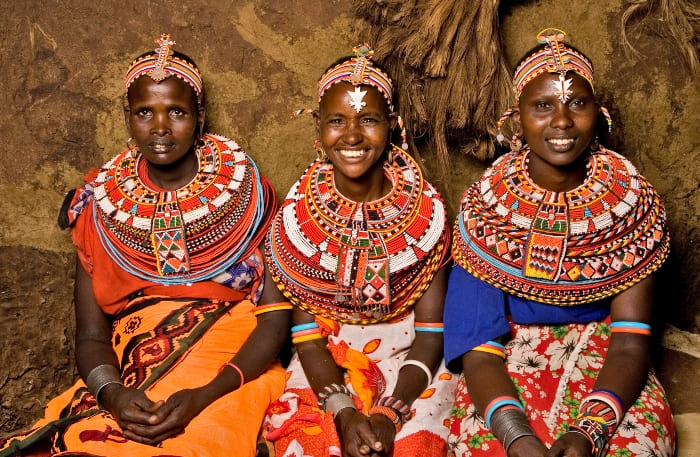The Samburu people of Kenya, known for their vibrant culture and deep-rooted traditions, are a semi-nomadic ethnic group primarily residing in the Samburu County, located in the northern part of the country. Closely related to the Maasai, the Samburu have managed to preserve their way of life amidst modern changes, making them a fascinating subject for anyone interested in indigenous cultures and African heritage. This article delves into the history, lifestyle, customs, and challenges faced by the Samburu people.
Historical Background
The Samburu are part of the larger Maa-speaking communities, which include the Maasai and the Ndorobo. Historically, they migrated south from the Nile Valley around 500 years ago, eventually settling in the arid and semi-arid regions of northern Kenya. The name "Samburu" is derived from a word meaning "butterfly," symbolizing their adaptability and resilience in a harsh environment.
Social Structure and Lifestyle
The Samburu society is organized into clans, with each clan having specific roles and responsibilities. Their social structure is patriarchal, with elders holding significant authority. The community is divided into age sets, which are groups of men who undergo initiation rites together and move through stages of life as a unit.
- Livelihood: The Samburu are predominantly pastoralists, relying on livestock such as cattle, sheep, goats, and camels for their sustenance. Livestock is a source of food, wealth, and social status. During dry seasons, they practice transhumance, moving their herds to find pasture and water.
- Housing: They live in temporary settlements called "manyattas," which are clusters of huts made from locally available materials like sticks, mud, and cow dung. These structures are designed to be easily dismantled and rebuilt to accommodate their nomadic lifestyle.
Cultural Practices and Traditions
The Samburu culture is rich in traditions that have been passed down through generations. Their customs and rituals play a crucial role in maintaining social cohesion and identity.
- Initiation Rites: Initiation ceremonies mark the transition from childhood to adulthood. Boys undergo circumcision and are then considered morans (warriors). This period of their lives is marked by bravery, hunting, and protecting the community. Girls undergo a separate initiation process that includes elaborate ceremonies and preparation for marriage.
- Dress and Adornments: The Samburu are renowned for their colorful attire and elaborate beadwork. Both men and women wear bright shukas (cloth wraps) and adorn themselves with beaded necklaces, bracelets, and earrings. These adornments are not only decorative but also signify social status and identity.

- Music and Dance: Music and dance are integral to Samburu culture. Traditional songs and dances are performed during ceremonies, celebrations, and rituals. The "jumping dance" of the morans is particularly famous, showcasing their agility and strength.
Challenges and Modern Influences
While the Samburu have managed to preserve much of their traditional way of life, they face numerous challenges in the modern world.
- Climate Change: Increasingly erratic weather patterns and prolonged droughts threaten their pastoralist lifestyle, leading to food insecurity and loss of livestock.
- Land Rights: Encroachment on their traditional lands by agricultural expansion, development projects, and wildlife conservation efforts often leads to conflicts and displacement.
- Access to Education and Healthcare: Limited access to education and healthcare services hampers the community's ability to improve their living standards and adapt to changing conditions.
- Cultural Erosion: As younger generations are exposed to modern influences through education and media, there is a growing concern about the erosion of traditional values and practices.
Efforts to Preserve Culture and Improve Livelihoods
Various initiatives aim to balance the preservation of Samburu culture with improving their quality of life.
- Cultural Tourism: Samburu communities have embraced cultural tourism as a way to generate income while sharing their traditions with the world. Visitors can experience their way of life through guided tours, traditional dance performances, and stays in manyattas.
- Education Programs: Non-governmental organizations and the Kenyan government are working to provide better access to education, ensuring that Samburu children can pursue formal education while maintaining their cultural identity.
- Sustainable Livelihood Projects: Efforts to introduce alternative livelihoods, such as beekeeping, handicrafts, and eco-tourism, help diversify income sources and reduce dependence on livestock.
Conclusion
The Samburu people of Kenya exemplify the resilience and adaptability of indigenous cultures. Their ability to maintain their traditions while navigating the challenges of the modern world is a testament to their strength and unity. As they continue to face environmental, social, and economic pressures, it is crucial to support efforts that preserve their unique heritage and improve their livelihoods. The Samburu offer a rich and vibrant example of Africa's cultural diversity, reminding us of the importance of safeguarding the world's intangible cultural heritage.
Meet the Samburu People of Kenya